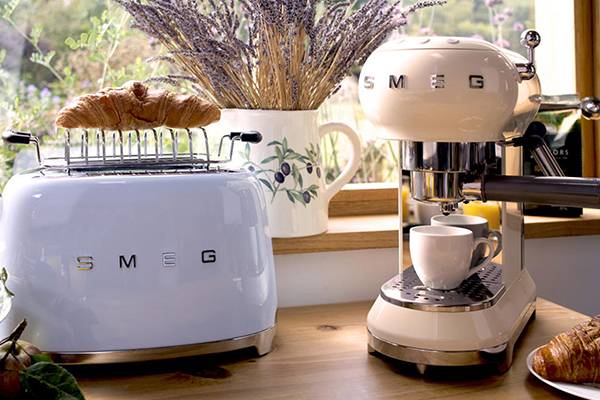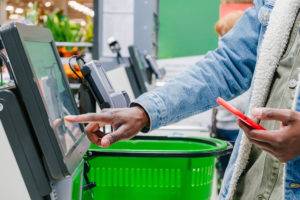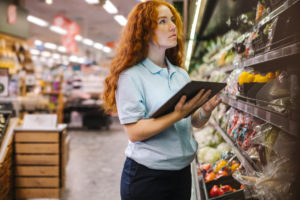
SMEG Customer Case Study
Download this data sheet to explore the features and benefits of Naveo Commerce for Enterprise Grocery.
Connected Commerce is proving itself to be an essential structure within online retail deployment. We explain its meaning and relevancy to a complex industry in need of simple solutions in a post-pandemic world.
The post-pandemic shift to online retail order fulfilment has propelled one software strategy to the front of senior leaders thought process when considering an online grocery software approach. Namely, connected commerce.
But just what is connected commerce? Furthermore, why is it so important for senior leaders to search for it when searching for new online grocery software?
We will answer these questions and more, below.
Simply put, connected commerce is a series of processes that exist to fulfil an online order placed by a customer from end-to-end. A customer looking to perform their grocery shopping from home may enter an online store, then place all the items that they want into a digital basket, then pay.
Subsequently, a series of connected events link together to allow the store to fulfil the order and deliver it to the customer’s front door.
For example, when an order is taken, the selected item is picked and dispatched to a delivery driver who carries the goods to the customer. If more stock of the chosen item is needed, then warehouse management systems need to be updated so that more online shoppers can select the item in future.
Grocery fulfilment is one of the hardest niches to deploy in the online realm. This I because a grocery business has so much more to consider when offering home delivery. Consider the following:
Generally speaking, these are not questions that need to be answered by most other retail brands.
For example, if ordering a pair of shoes online, a customer will usually accept a given delivery date. If the item is out of stock, they are usually unwilling to accept a different size or brand, so will accept their money back as a refund.
This is not the case with grocery, as customers expect a replacement product if their preferred brand is unavailable. Therefore, adjustments need to be made within the system quickly.
Couple this with the knowledge that grocery suppliers tend to work with high volume ordering and low profit margins and senior leaders have a difficult situation to grapple with when considering their next move in the online grocery software realm.
– Contact us today for a product demonstration of our industry leading connected commerce solution
Naveo Commerce offers a connected commerce solution, which is specifically tailored to online grocery needs. Our customers, across Europe, each have their own way of working and customer promise to deliver. To help meet the widest range of operational priorities and approaches, our headless system is scalable and can deploy micro-fulfilment via regional stores or ship bulk orders from a centralized “dark store” fulfilment centre.
Our simple 5-step solution can be integrated into a business’s grocery eCommerce plans within weeks and takes omnichannel order volume to the next level, improving customer experiencer.
Major grocers have had to quickly bring their plans for online fulfilment forward due to lockdown restrictions and public fears of in-store hygiene or new-found trust in convenient online routines. Whilst some major grocers have decided to create and deploy their own online grocery solution from the ground up over several years, most retailors do not have the time or capital to do so.
In such a low margin industry, keeping up with competition is key. A 2021 study of Online Grocery Shopping habits in the USA found that amongst the major online grocers in America, “no provider stands out […] the brand landscape is very scattered for consumers” and that, “the race for providers to become the market leader is ongoing”.
With that said, grocers should look to deploy a solution which caters exactly for their customers needs and provides automation through headless software.
Naveo Connected Commerce has an outstanding range of features, designed specifically for the grocery niche. Furthermore, our system is deployable in a matter of weeks and can be scaled exactly to your brand’s needs. Request a demo today.

Download this data sheet to explore the features and benefits of Naveo Commerce for Enterprise Grocery.

As Naveo Commerce plans its exciting launch of Scan & Go supermarket technology, we look at the key differences between this and self-checkout services already offered in most grocery stores.

As Naveo Commerce plans its exciting launch of Scan & Go supermarket technology, we look at the key differences between this and self-checkout services already offered in most grocery stores.

After Brexit, the Climate Emergency will be top of the UK Government’s agenda. But, what can retailers do to make a difference – before it’s too late?

After Brexit, the Climate Emergency will be top of the UK Government’s agenda. But, what can retailers do to make a difference – before it’s too late?

Customers are becoming increasingly used to a seamless purchasing experience. For the grocery sector, getting this right can be challenging, but as Naveo Commerce CRO, Tomas Granö shares, having a coherent, customer first personalization strategy in place is key.

As Naveo Commerce plans its exciting launch of Scan & Go supermarket technology, we look at the key differences between this and self-checkout services already offered in most grocery stores.

As Naveo Commerce plans its exciting launch of Scan & Go supermarket technology, we look at the key differences between this and self-checkout services already offered in most grocery stores.

Customers are becoming increasingly used to a seamless purchasing experience. For the grocery sector, getting this right can be challenging, but as Naveo Commerce CRO, Tomas Granö shares, having a coherent, customer first personalization strategy in place is key.